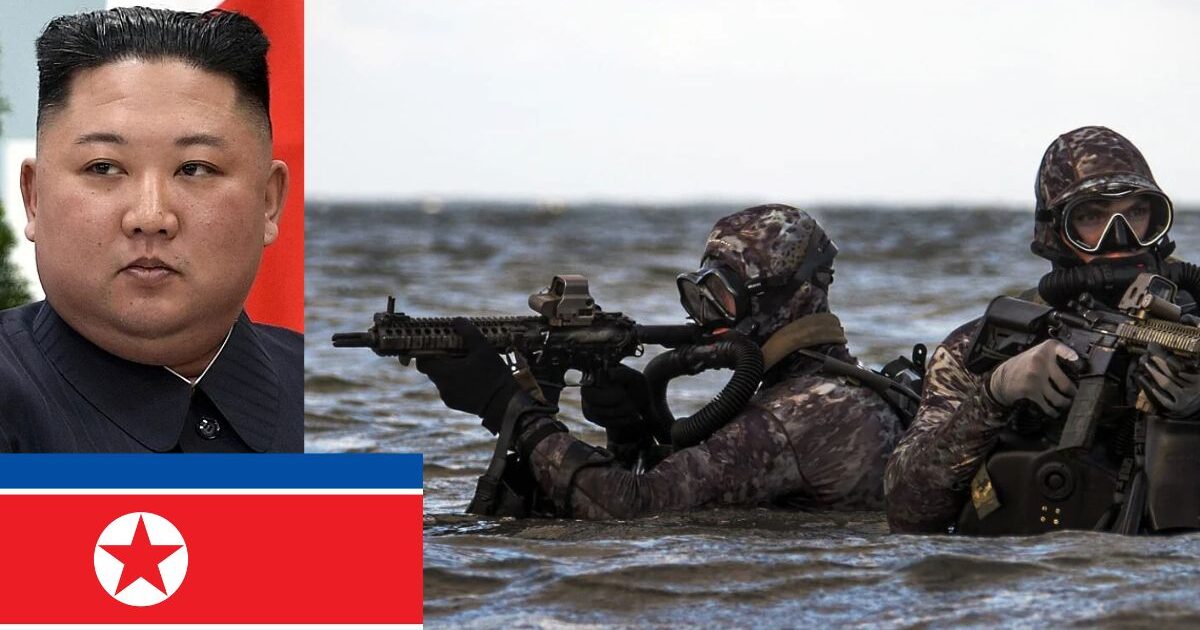
In early 2019, SEAL Team 6’s Red Squadron embarked on a covert mission that fell apart and cost lives, deep into North Korean territory to place a covert communications listening device, one of the riskiest operations in recent U.S. military history, the New York Times reported on Friday.
The goal was to plant a communications-interception device to monitor the country’s dictator Kim Jong-un’s private communications. The mission was, according to the Times, personally approved at the highest levels, with then-President Donald Trump allegedly giving the green light.
The covert mission was happening at the same time that Washington was seeking peace deals with the Communist country.
The operation was born out of frustration within U.S. intelligence circles. Despite years of sanctions and surveillance, obtaining reliable intelligence on North Korea’s nuclear and missile programs remained difficult to obtain. Planners believed that a direct insertion of highly trained operatives might succeed where satellites, drones, and other remote methods had failed.
The SEALs deployed from a nuclear-powered submarine, using stealth ‘mini-submarines’ to reach the North Korean coastline at night. Temperatures were near freezing, and the team had trained for months in similar conditions. Every detail was rehearsed to minimize exposure, including strict radio silence and precise timing.
Despite the meticulous planning, the mission quickly went wrong. As the SEALs approached the shore, a North Korean fishing boat came into view. Believing they had been spotted, the team opened fire. What they encountered, however, were not armed soldiers but unarmed civilians diving for shellfish. Reports indicate that two to three civilians were killed instantly.
In interviews yesterday, members of Seal Team Six defended the use of violence against civilians as inherently permitted due to the nature of the operations.
The @nytimes says that Seal Team Six went into North Korea during President Trump’s first term. Former Seal Team Six Member Robert O’Neill reacts.
@thehill @newsnation @mchooyah #navyseals #SealTeam6 #NorthKorea pic.twitter.com/9QwZgL2a2z
— Blake Burman (@BlakeBurman) September 5, 2025
The SEALs reportedly attempted to conceal the deaths. According to sources, the team punctured the victims’ lungs so the bodies would sink, then withdrew without planting the surveillance device.
The mission ended in complete failure.
Allegedly, Congress was never told about the mission.
President Trump has said to reporters, as well, that he was not told of the operation. Trump, when asked about the operation after reports surfaced, denied prior knowledge. “I’m hearing it now for the first time,” he told reporters.
The secrecy surrounding the operation has raised significant legal and ethical questions. Covert military actions of this type are typically required to be reported to congressional intelligence committees. This mission, however, was not disclosed, leaving lawmakers and the public unaware of a deadly operation sanctioned at the executive level.
It also brings into question who is authorizing these military operations that risk starting a war and which also end up taking human lives, as allegedly happened in this story involving North Korea.
On social media, some users defended the Seals, many defended President Trump, and many contested the accuracy of the New York Times’ story.
The White House and Pentagon have largely declined to comment. Some SEALs involved in the mission reportedly received promotions despite the catastrophic outcome.
Reuters allegedly verified the Times’ account as reported. Al Jazeera has also picked up the story.
The mission had broader implications for U.S.-North Korea relations. It occurred just weeks before the summit between Trump and Kim Jong-un, which aimed to engage in nuclear negotiations. The botched operation is also said to have contributed to a rapid deterioration in trust, and the summit collapsed without agreement.
The 2019 North Korea–United States Hanoi Summit, commonly referred to as the ‘Hanoi Summit,’ was a two-day summit meeting between Kim Jong-un and Donald Trump, held in Vietnam from February 27 to 28, 2019.
North Korea subsequently accelerated its nuclear development, further complicating the regional security situation.
Pentagon sources indicated that the rules of engagement were cited to justify the SEALs’ actions. However, many military experts question whether killing unarmed civilians under mistaken assumptions can be justified, even under extreme operational stress. The incident has prompted renewed debates about the ethics of covert operations and accountability at the highest levels.
Although the official number has not been published, there are an estimated 2,500 Navy SEALs. SEALs are elite U.S. Navy special operations forces trained to conduct high-risk missions in sea, air, and land environments, including direct action, special reconnaissance, counterterrorism, and hostage rescue. Their mission is to operate in the most dangerous and sensitive situations, often behind enemy lines, to gather intelligence, neutralize threats, and support U.S. strategic objectives.
Legal experts have highlighted potential violations of federal law. Any covert action that risks civilian casualties is supposed to be officially approved, authorized, and closely monitored by oversight bodies. Failing to report the mission to Congress could constitute a breach of those rules. Observers note that this level of secrecy undermines trust in military leadership and raises serious questions about the accountability of decisions.
The incident follows a longer history of casualties of U.S. operations abroad that often go underreported and ignored by the mainstream media. In official language, many of these civilian deaths are known as ‘collateral damage’ and the accuracy of the reporting about their deaths is always in dispute.
Arguments about the civilian impact and deaths from American foreign policy over the past generation includes political controversy about American wars in the past generation. The two primary wars, a range of 46,000-400,000 deaths in the Afghanistan War from 2001-2021, and even wider estimates for the Iraq War from 2003-2018, of 48,000-751,000.
North Korea has an estimated population of about 26 million people, with the vast majority concentrated in the capital, Pyongyang, and surrounding urban areas. The Korean War, which lasted from 1950 to 1953, ended with an armistice 72 years ago rather than a formal peace treaty, leaving a cease-fire in place along the Korean Demilitarized Zone (DMZ) that technically means the two Koreas remain at war.
A notable similar incident involving civilian deaths was revealed in 2010 by WikiLeaks, where the document-leaking site called the video “Collateral Murder.” The video, released in 2010 but recorded in 2007 during the Iraq War, became one of the most controversial pieces of leaked military footage of the 2000s. Shot from the gunsight camera of a U.S. Apache helicopter in Baghdad, it showed American soldiers engaging what they initially believed were insurgents, but were unarmed men and two Reuters journalists. The footage also depicted the subsequent firing on a van that stopped to help the wounded, wounding two children inside. Its release ignited a global debate about rules of engagement, transparency, and the ethics of modern warfare.
The post NYT Alleges Secret 2019 SEAL Team 6 Mission to North Korea Ended in Failure, Civilian Murders appeared first on The Gateway Pundit.

